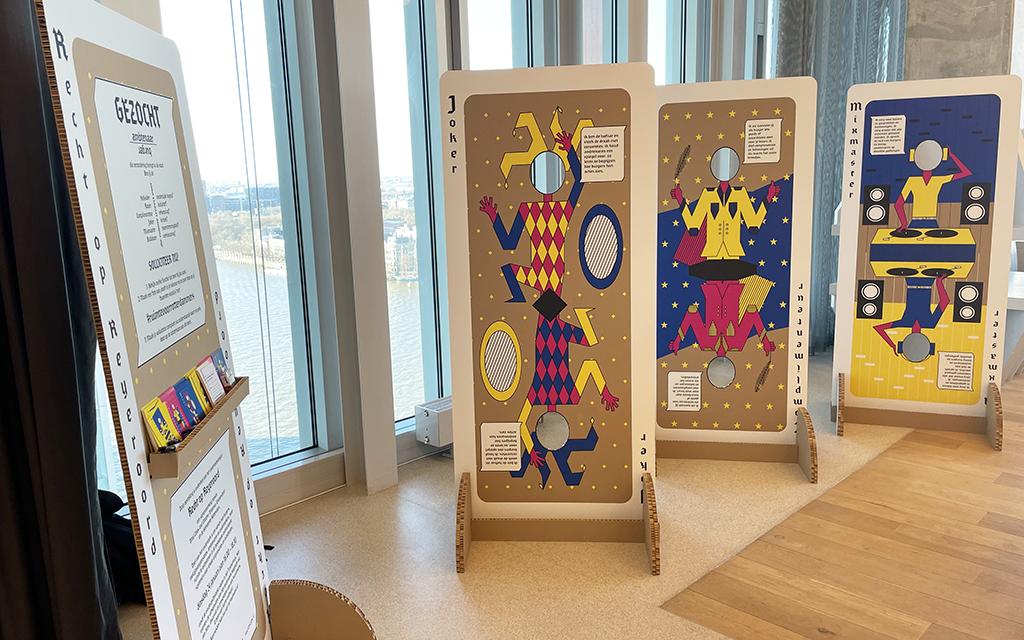Recent polls show that trust in government in the Netherlands is at an all-time low, a concrete manifestation of this phenomenon played out in Rotterdam South with a 19% voter turnout. In order to regain trust, a program called The Neighbourhood’s Turn was developed in the city, with the ambition to give citizens a more direct say and power in local issues and their living environment.
The role of local governance in crafting more inclusive urban spaces has emerged as a recurring concern throughout the urban series thus far, including on the inaugural episode of the Urban Uncovered podcast. This article by Dr. Emiel Rijshouwer and Dr. Els Leclercq, the founders of Design & Publics, a collective of action-researchers and designers who support citizens’ Right to the City and engage and intervene in societal challenges. They use design as a tool to shape and guide participatory processes and shape, communicate, discuss and test ideas, but, above all, to support the formation of ‘publics’.
But how can civil servants facilitate this process? In 2022 the authors were asked to evaluate a number of pilots in Reyeroord, a working-class neighbourhood where for the last six years civil servants have already worked closely with residents on a number of experimental projects (named Reyeroord+). However, despite or perhaps –somewhat paradoxically- as a result of the close working relationship between Reyeroord residents and civil servants and visibility of the government within the neighbourhood, the levels of trust in government dropped in this particular neighbourhood even more than in other parts of Rotterdam.
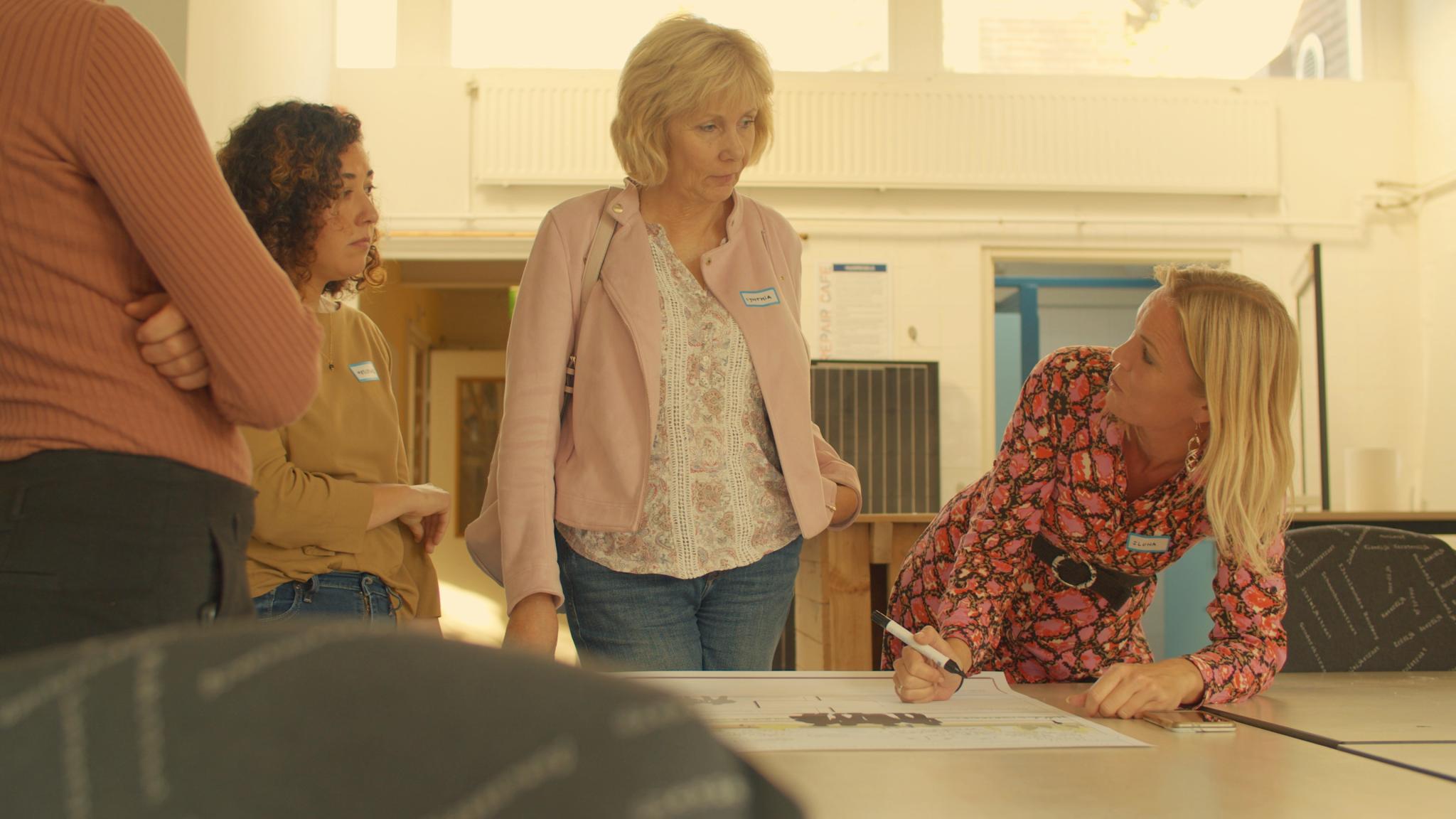
From our research, it emerged that in all these cases the literal proximity to the community was not enough. Participants felt that the officials and researchers that had come into the neighbourhood to ask their input and ideas (“What do you want?”) did so on topics that fit their agendas without neighbours ever seeing their input and ideas being implemented. In the case of providing (a) space for youth, one of the four projects we analysed, this resulted in local organisations refusing to participate further in any government and/or university-initiated research projects:
I get tired of all of this, because it has been clear for ages what young people want. And nothing has really changed and in the meantime we have lost a generation. Why? Why invest in more research? It only costs money.
For this particular case we managed -with the help of a tireless and irreplaceable neighbourhood networker (employed by the local government) – to bring a wide variety of stakeholders consisting of higher and lower ranked government officials, youth workers, founders of youth initiatives, teachers, police officers, and academics together in order to further explore this issue. It is worth noting that the youth themselves were not invited on purpose, in order to spare them potential disappointments, as it could not be guaranteed that any concrete action would follow from their input. We organised a workshop session, in which, using creative methods, participants were invited to write down and draw their visions for (a) space for youth in Reyeroord. Across the board, all seemed to agree that there should be 1) a physical space – their own place to unwind, do their school work, engage in music, dance, and other creative outlets 2) the room to be accepted in the neighbourhood, i.e., to not automatically be labelled as a nuisance or (potential) criminals; 3) to be present/represented within the institutional system.

Whilst none of the participants were surprised by these outcomes, none of them could exactly grasp what had hindered the implementation of these ideas in the past years. Based on the conversations with and amongst stakeholders, we drew a diagram (below), which expressed how higher-ranked officials challenge their lower-ranked colleagues – such as the civil servants of Reyeroord+ who operate in the neighbourhood – to be more responsive to citizens’ needs and requests. At the same time, they instruct middle-ranked officials to enter long-term contracts with strict assignments and strict budgets with formal youth organisations, which do not feel any leeway to cooperate with citizens’ initiatives.
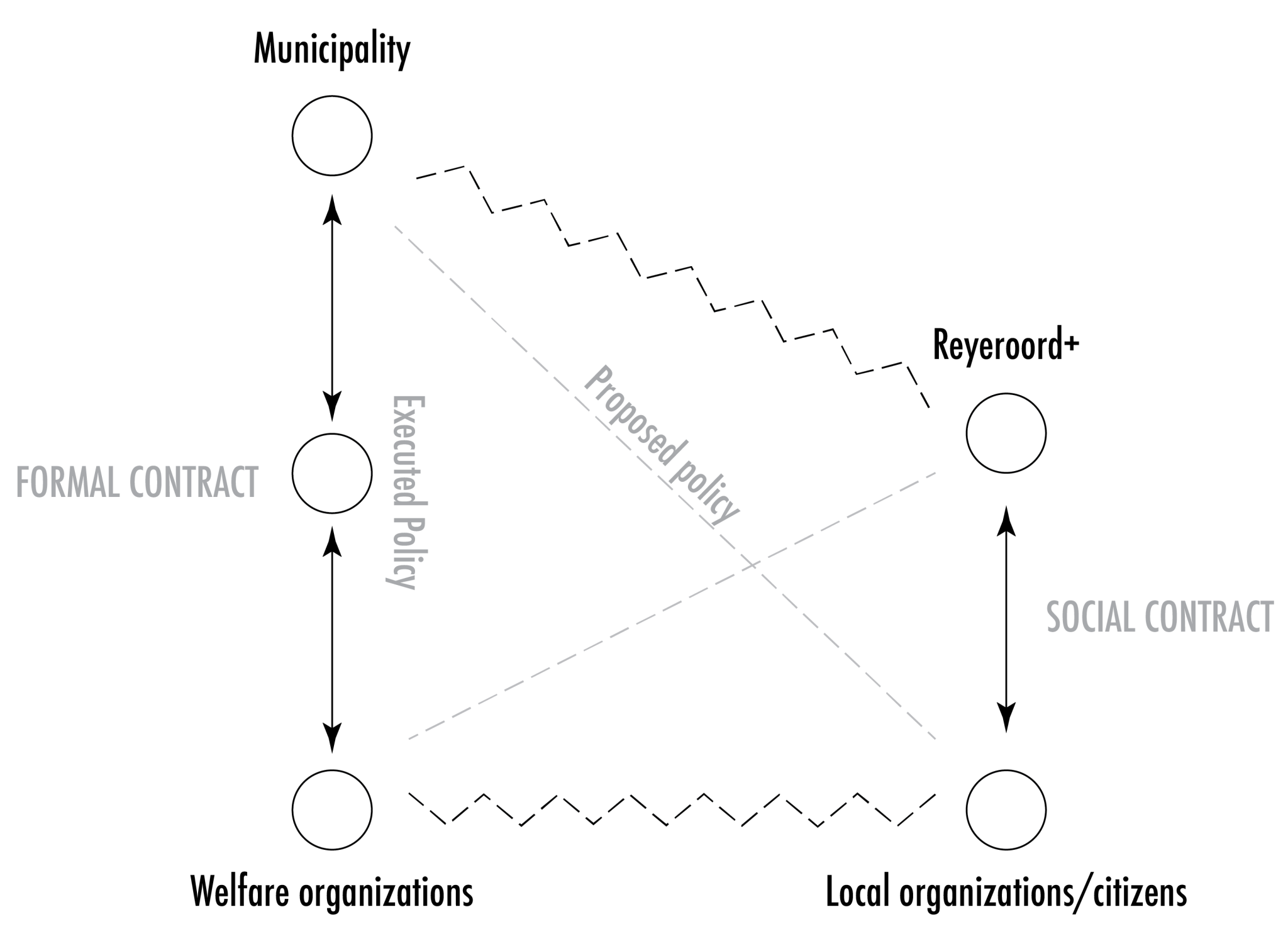
To further explore this situation, we used a ’systemic constellation’ (Ritter & Zamierowski 2021): in a following session we taped a cross on the floor and we invited participants to stand in ‘their’ quadrants, according to the diagram and to experience and reflect upon this position (Figure 3a,b, c [caption: photo: Studio Roodenburch]). This physical intervention made the actual and symbolic distance - between older, White men making decisions and working on the project and the younger people and more vulnerable communities struggling in the neighbourhood strikingly tangible. When asked which position they actually preferred, unsurprisingly, most participants moved towards the centre, in order to “engage in dialogue,” “listen more closely to youth,” “collaborate more intensively,” “execute policies more in line with local concerns,” and “to involve citizens and local organisers in decision-making that affects them.”
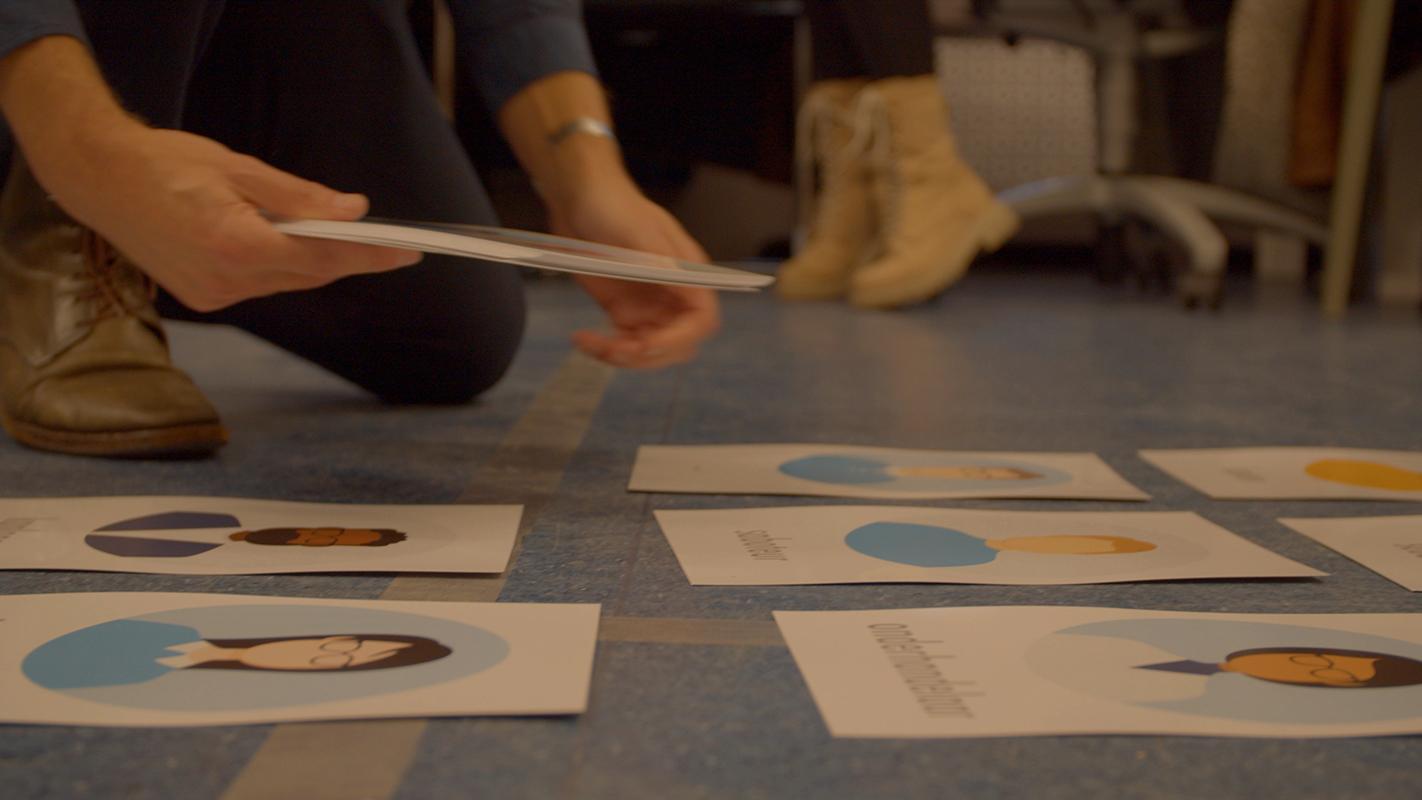
Based on these experiences and insights we figured that an essential aspect to support the development of (a) space for youth would be to try and change governmental systems. Inspired by the idea/concept of the poet, we teamed up with foresight and design studio Pantopicon and designed 6 new, fictional roles (Figure 4a,b,c,d,e,f,) for future civil servants and citizens, who, in our opinion, would be essential in order to realize a society in which citizens’ initiatives, ownership, control and their Right to the City actually exist. These included:
- The Hellsider, a civil servant who defends the positions and interests of citizens in the municipal organization; and a citizen who clarifies civil servants’ positions and interests among fellow citizens.
- The Mixmaster, a civil servant and a citizen who speak the multitude of languages of ‘the others,’ who bring balance in conversations and decisions and who make sure that all voices are heard.
- The Jester, a civil servant or citizen who challenges conventions and who holds a mirror up to their peers to confront them with their actions.
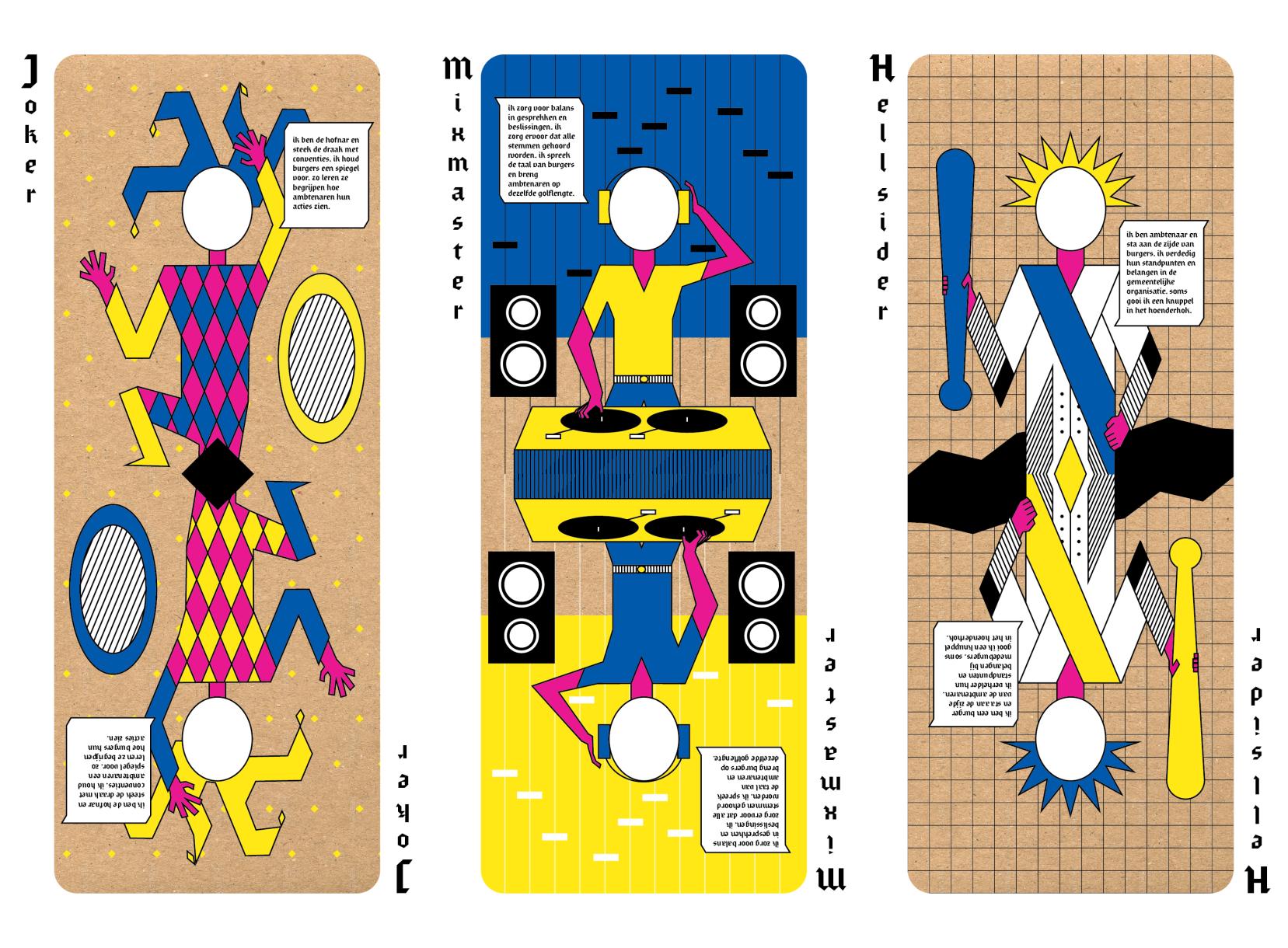
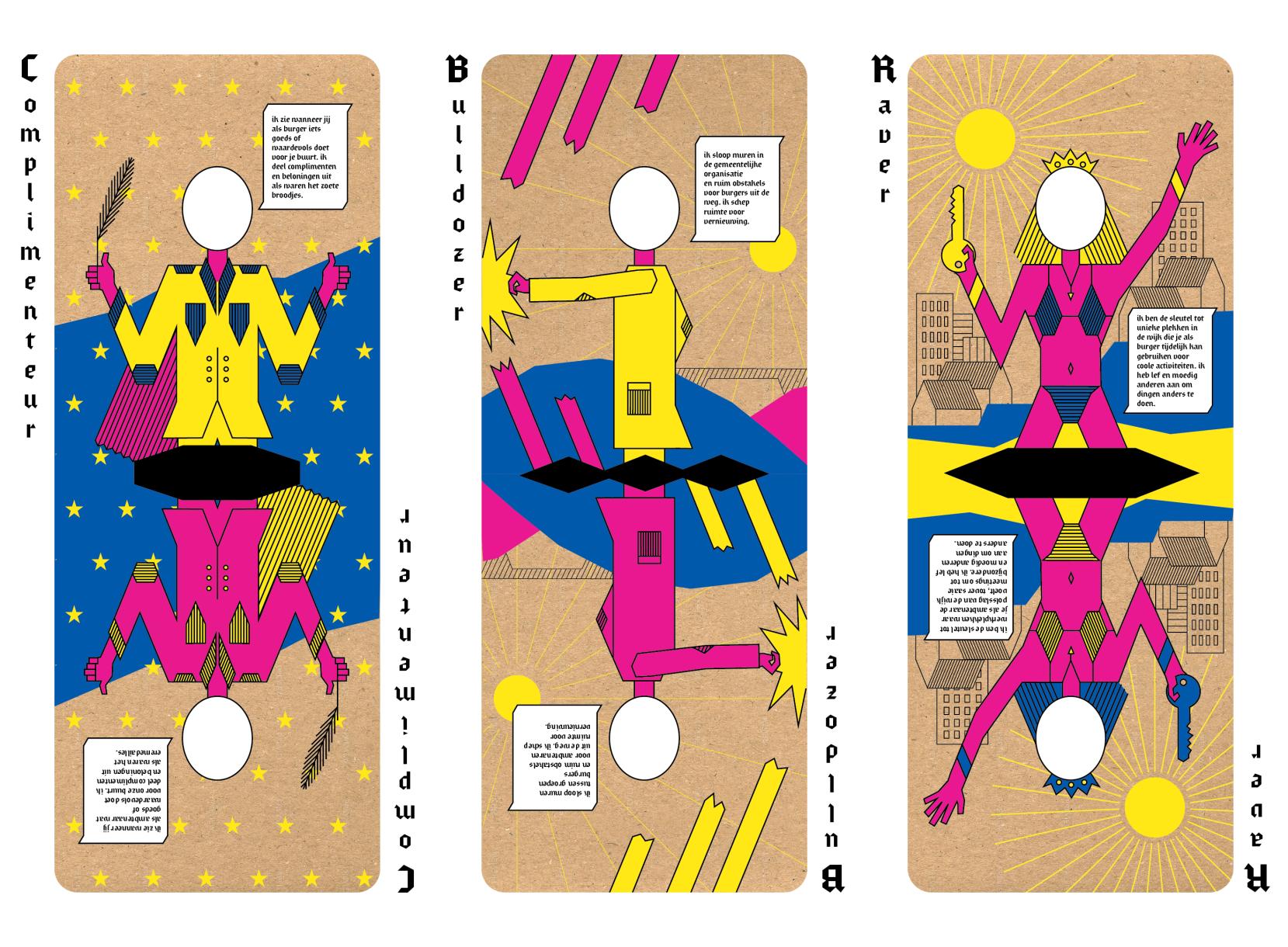
We printed these as playing cards on life-size cardboard panels and placed these in public spaces at two of the municipality of Rotterdam’s offices, with postcards as an invitation to apply for one of these new ‘functions'. Strikingly, most passers-by seemed to try and avoid being confronted with this intervention. However, more progressive civil servants find in them (these life-sized playing cards) the impetus or conversation-starters urgently needed to start working on some of the desperately needed systemic changes. They might already perform some of these innovative, transformative roles, just as some of the civil servants and researchers who, as a ‘public’ operating in unison, made Recht op Reyeroord “Right to Reyeroord” a success, as, eventually, the youth got their own ‘hub’ to use, to program and to govern.
